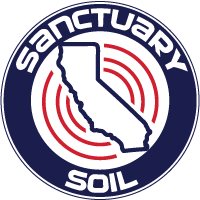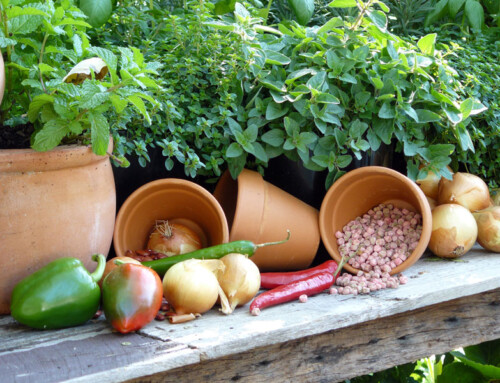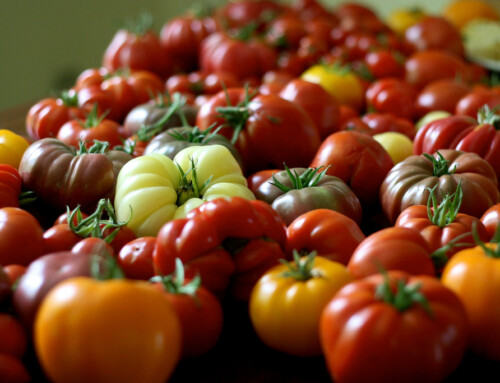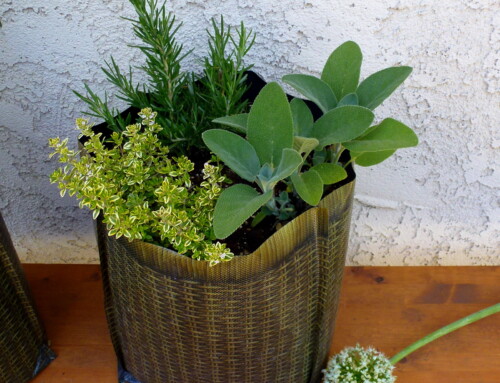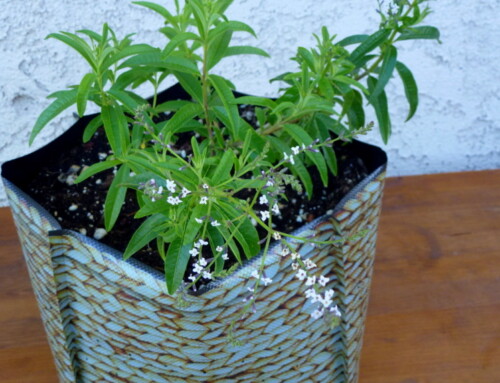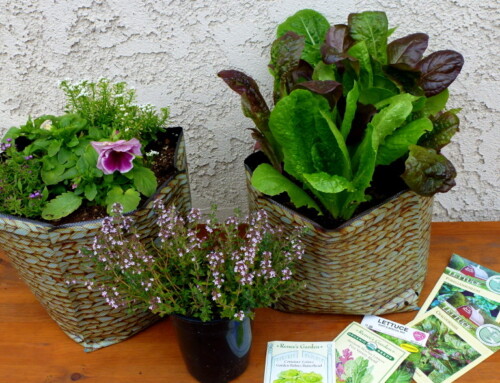The Pain of Rain
by Gary Kline
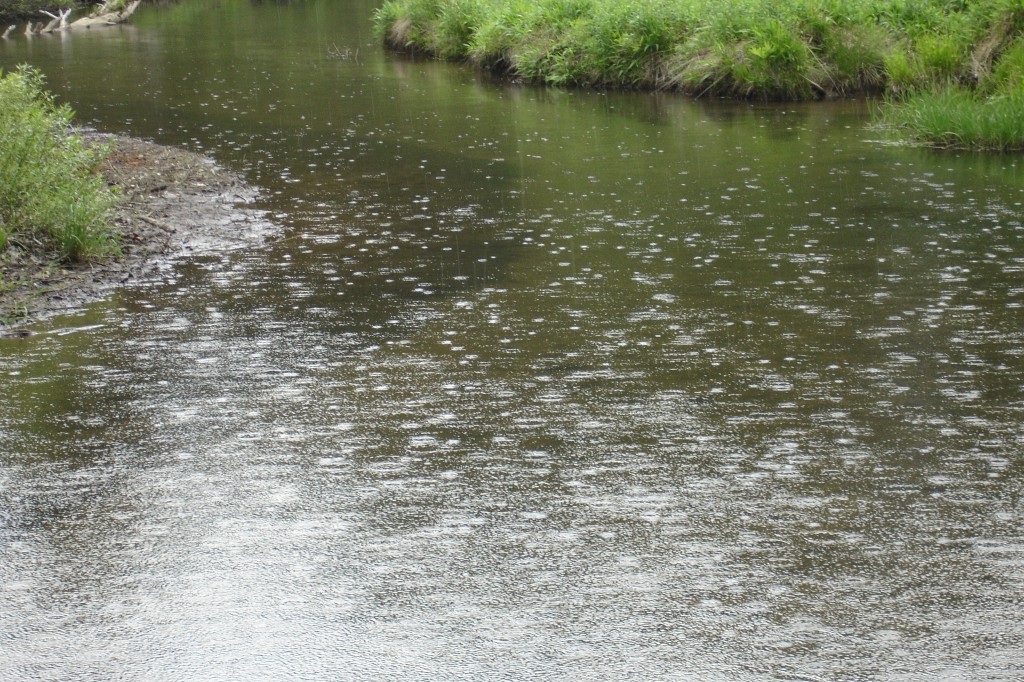
The pain of rain is mainly in the soil, but its effects are much further reaching. Any place that gets more than 25 inches annually of precipitation suffers loss of soil fertility, unless there is an accompanying amount of summer heat to evaporate much of the precipitation. The amount, kind and seasonal growth of the vegetation also figures into this. Here in Olympia, we get around 50 inches, mostly in the winter months, and one can get pretty tired of it. In Forks, over on the coast, they get closer to 200 inches; and in Sequim, where there is a “rain shadow” created by the Olympic Mountains, they get only 17 inches.
We who garden in western Washington are part of the Maritime Northwest, a stretch of land from southern British Columbia to northern California, west of the Cascade Mountains. This subregion gets an abundance of rainfall (and some snowfall) due to the atmospheric moisture barrier created by the Cascades. Obviously, that’s not a problem for growing Douglas Firs, but it’s a serious, if usually unrecognized, problem for growing food crops. Places that get very low rainfall (under 5 inches) are known as deserts, which is a different problem for growing crops, but that’s another matter. Watering or irrigation adds to the problem in very wet and in dry regions. It can cause further leaching or lead to salinity problems.
Probably no factor causes as much deterioration of soil fertility as rainfall, looked at over the short term, or over the eons. It’s a different story in Nebraska, where the annual rainfall and snowfall is about that magical number of 25 inches. Being from neighboring Iowa, I can tell you about summer thunderstorm downpours and routine knee-deep winter snowstorms. However, the total precipitation is considerably less than we get in the Maritime Northwest. Consequently, the fertility of midwestern and prairie state soils is considerably greater than ours. There is a net lower amount of moisture draining more than a few inches below the surface.
By fertility I am referring mainly to nutrient minerals, which can be washed out of the topsoil (leached) about as fast as they can be generated by “weathering” processes in the soil. The point that needs to seep in, however, is that fertility matters greatly in the production of food with good nutritional quality.
Nutrient quality in food, to include livestock, can rise no higher than the nutrient content of the soil in terms of mineral elements and the organic matter (humus) content of the soil on which it is raised. Your health rises and falls according to the nutritional content or density of your food. This factor is the greatest cause of health or of malady or disease in our lives. Yet, on the whole, it is the most overlooked factor, despite the fact that Hippocrates told us this 2400 years ago.
By nutritional content I’m referring to proteins, vitamins, minerals, enzymes and various complex carbohydrate molecules. These nutrients can be measured or quantified in the aggregate using an instrument known as a refractometer to get a BRIX number; essentially a measure of the soluble solids in plant sap. The higher the BRIX number, the greater the nutrient density within the plant with likelihood of greater nutritional health benefit for whatever consumes that plant, and also the lower the likelihood of that plant becoming diseased or bothered by pests.
In organic growing we know that organic matter or humus is essential, but in terms of increasing soil fertility, the key ingredient to be supplied is minerals. We don’t generally apply vitamins and enzymes to enrich the soil. We may supply proteins in the form of various plant and animal meals, but what is essential to making the system go (in conjunction with organic matter) is the minerals. They also supply the nutrient needs of microbes that manufacture vitamins and enzymes, which can be of benefit in feeding the plants.
Minerals ultimately are broken out of rock particles, which are the main parent material of soil. Water, and even erosion, plays an important part in breaking those minerals out, but it also plays the major role in leaching them downwards and on their way to the ocean.
In his latest book, The Intelligent Gardener (2013), Steve Solomon (p. 40) puts all the preceding in a concise and cogent summary worth quoting. I do take exception to his claim that all rock fragments eventually weather down to nothing. Certain sands, those found on ocean beaches, are all but eternal.
“Leaching has more to do with soil fertility than any other factor. The amount of soil leaching determines a crop’s nutrient-density unless the grower can wisely import plant nutrients and reverse its effects. If you want to understand your own soil, you must take leaching (or lack of it) into account. Soil starts out as rock fragments that eventually weather down to nothing. Every grain of soil that stays in place long enough, will eventually dissolve into the soil solution.
Dissolved minerals can be grabbed by plants before they leach out. When these plants die (or are eaten), their bodies fall to earth (or the animal’s manure does – or the animal itself, when it dies). Then these organic materials decompose back into the earth from whence they originated; the minerals in that organic matter are again released into the soil solution, and new plants have an opportunity to assimilate them. This whole process is referred to as ‘the carbon cycle’.”
The second greatest loss factor is the loss off-site in produce or livestock that goes to market or winds up in sewage systems, rather than being returned to the land. So it’s minerals in the right quantities, proportions, and completeness that have to be supplied to most soils, and generally they aren’t, or are not supplied correctly. And that fact can’t be emphasized enough.
Given some modest level of organic matter (or humus) in the soil, balanced mineralization is what controls fertility and the supply of nutrients at the base of the food chain (or food pyramid) for transfer on up to the pinnacle, which is us.
Water, of course, is indispensible to life and carries nutrients; but heavy rainfall and irrigation is also detrimental because it carries minerals out of reach of plant roots. That is a major fact to be recognized by gardeners and farmers and compensated for.
If you go for a drive anywhere around South Puget Sound you will see expanses of pastureland that generally look like they have been mown to the ground, yet appear to support comparatively few cows. They may also be packed with clumps of sedges, thistles and various other weeds not relished by cows. In other words, as productive pastures they are pathetic.
There are two basic factors involved in why these pasturelands are so pathetic; they are ignorance and economics. Some farmers evidently expect the soil’s fertility to be a static thing and don’t realize it can run down from overuse, and particularly if nothing is put back to restore nutrient losses that invariably occur.
Many farmers don’t make an effort to fully restore their pasture fertility because they see it as too costly or not worth what they expect to get out of their investment. And, in truth, in many situations, farming does not pay. This is a disgraceful situation for society to permit, yet it is commonplace here. But what if we could change and reduce the detrimental effects of rainfall leaching, and do it in ways that are comparatively inexpensive over a relatively short period? What if the loss of major, key mineral nutrients could be dramatically lowered and the cost of remineralization made substantially less and more effective than has been the case historically? That changes the equation.
The means to actually do these two things has become available in the past few years and promises to become standard practice in the near future. It can also put us on the path to agricultural sustainability. The two products that are going to make that feasible are a liquid ocean mineral extract and a revived ancient soil amendment named biochar. Both of these are superior advances in terms of minimizing environmental and ecological impact and opening a floodgate to sustainability.
In the past, mineralization – – – when it was done – – – involved digging up concentrated mineral deposits, grinding them up and transporting them at considerable energy and dollar costs to points near and far, to be spread on croplands, and also on gardens. Now the system has been greatly simplified and economized, thanks to new technology, to take advantage of the vast reservoir of minerals in the ocean.
Particularly with regard to the realm of trace minerals that are finally getting recognized for their essential roles in soil, in plant and animal nutrition, there is now a concentrated source of virtually all minerals on the planet that can be used in far smaller quantity to mineralize soils and also as a highly effective foliar spray, but yet is comparatively less expensive, far less costly to ship, and does not need to be dug out of the earth.
The best ocean mineral supplement comes from the Pacific near Raymond, Washington and is named Sea-Crop. Ninety-five percent of the sodium chloride has been removed. Sea-Crop is sold at Black Lake Organic in quarts and gallons, but larger sizes are available, and it is generally diluted about 50 to 1 prior to application. I urge everyone to read the new book by the creator and manufacturer of Sea-Crop, Arthur Zeigler, which is entitled Seawater Concentrate for Abundant Agriculture, which is also available at Black Lake Organic. That book fully explains and documents the effectiveness of Sea-Crop in tests and field trials on a number of crops in places all around the world. It’s mind-blowing.
Other fertilizing materials (including lime, rock minerals, marine wastes, plant and animal meals, and perhaps manure) still need to be used along with Sea-Crop. What we are learning is that nutrient balance counts more than heavy dosing by major nutrients. Nevertheless, the combination will be far more effective and the total fertilizers should be significantly reduced for an equal or even superior yield with greater nutrient density.
But even so, there is the other product that will substantially bring down cost by dramatically reducing nutrient loss from rainfall and from watering or irrigation. At the same time, a new synergy involving microbes, nutrients, moisture retention, etc. is set up to not only hold nutrients in place, but also permit soil fertility to self-regenerate over time.
That second product is biochar, that acts like a giant mineral magnet and nutrient and moisture sponge. This nutrient conserving aspect can last for centuries. Additionally, biochar is probably the best practical method we have for sequestering carbon from returning to the atmosphere as carbon dioxide. How’s that for a side benefit (with enhanced nutrient density for crops to boot)?
Now do you see those western Washington pasturelands in a different light? How about what these products can do for your garden or homestead or farm? Black Lake Organic has begun selling small quantities of biochar and investigating its incorporation into other organic growing products. Stay tuned.
Eventually, biochar will come to be used on a grand scale, when it begins to sink in what this does for nutrient retention and regulation, drought reduction, and the realization that it, along with ocean minerals, largely solves the problem of how we move to the era of real agricultural sustainability. This is a quantum leap beyond simple organics, which alone, will not get us there.
Biochar and Sea-Crop take the pain out of rain. Furthermore, they could bring about a significant improvement or correction to global warming/climate change without us having to do anything extra. If we were smart, we would pay farmers and landowners to remineralize and treat their lands with biochar. The day is coming when we are going to need those lands in meaningful food production. This treatment lasts for centuries and everyone benefits. It’s a far better way to produce maximally wholesome food. Let’s get on it! GLK © 2012 Gary L. Kline All Rights Reserved
Black Lake Organic

